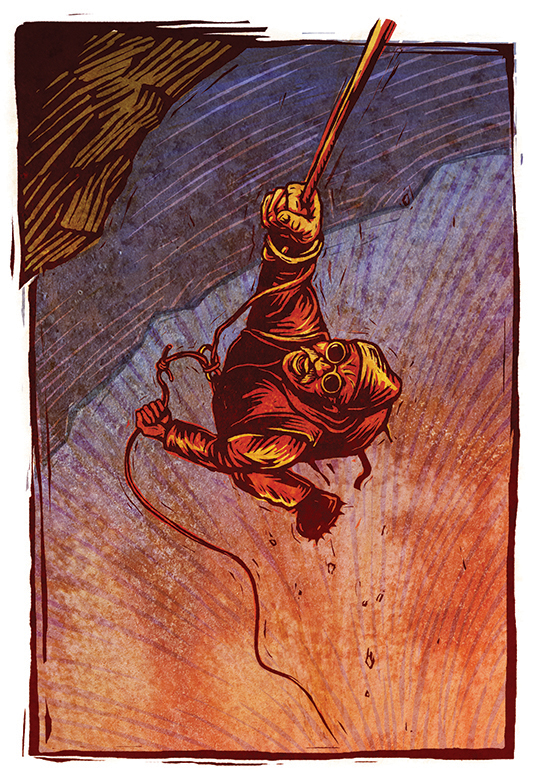[Illustration] Andreas Schmidt
To say that the mountains are a canvas on which we practice our art is one of the great cliches–and conceits–of climbing. Can comparing the act of climbing with that of creating art somehow elevate this pointless activity and give it social merit? We climb to be in the moment, savoring brief impressions as aesthetic in themselves: the varied textures of stone and ice; the way the light shifts across an ever changing landscape. We draw on our imagination to visualize a line, formulate a strategy or solve a sequence. But no matter how creative, significant and intense our experience of an ascent may be, at the end of the day, we are left with nothing tangible.
From this empty paradox comes a richness: What sport besides climbing can boast such an abundance of legends? Words and photographs can document some of the facts and scenes of a route. But in many ways, art has a greater capacity to portray the subjective essence of an adventure. As an interpretative medium, art allows more latitude to express that which has no proper representation. Aspects that loom larger than life in the mind’s eye can be emphasized or distorted. Colors that don’t exist in nature can add ambience and emotion. By utilizing the natural parallels between art and climbing, the artist-climber has the opportunity to redouble that experience while sharing it with others. Tracing a ridgeline with a pen can be a preamble to scrambling up it; drawing a fanciful topo afterward can record details that no one noticed before. The experience becomes circular. In 1860 a young British artist, Edward Whymper, was commissioned to make illustrations of the Alps, but in the process of sketching peaks, he became obsessed with climbing them. He later used his fine-lined engravings of gothic ice formations and eerie Brocken Spectres to record some of his dramatic ascents. In his memoir, Scrambles Amongst the Alps, Whymper explained:
The most minute descriptions of the greatest writers do nothing more than convey impressions that are entirely erroneous…. [T]hey are infinitely inferior to the reality. I have dealt sparingly in descriptions, and have employed illustrations freely, in the hope that the pencil may perhaps succeed where the pen must inevitably have failed.–Andreas Schmidt
[Andreas Schmidt has contributed frequent illustrations to Alpinist since Issue 7.–Ed.]